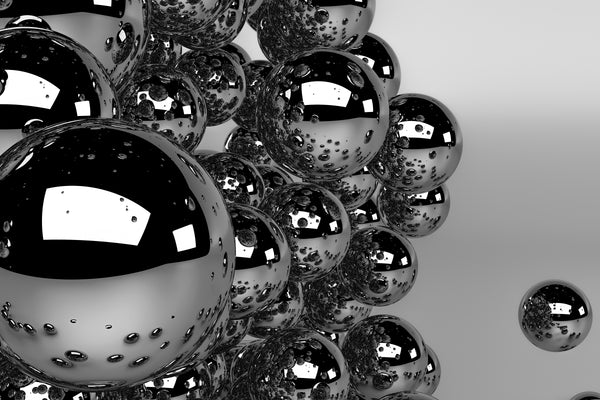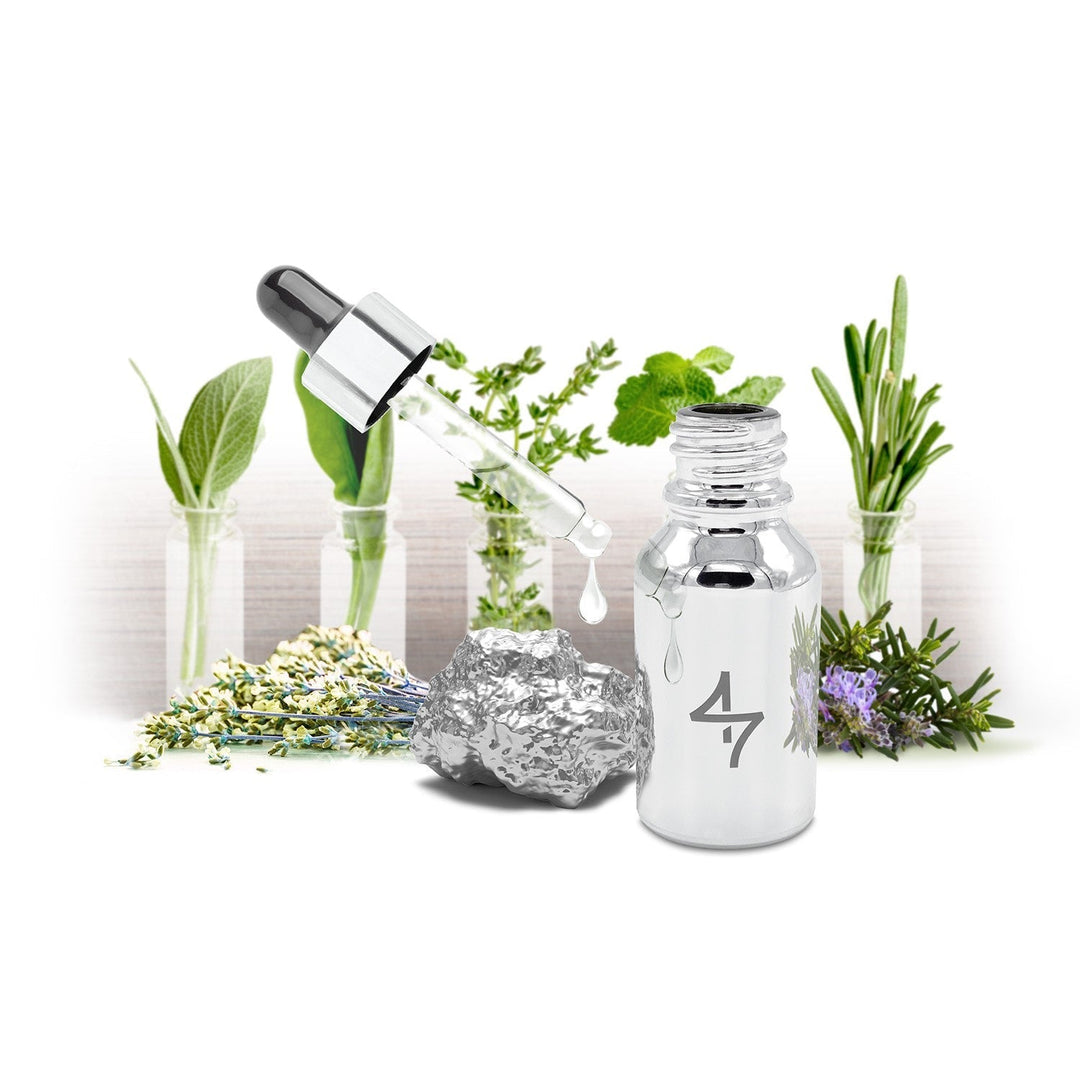There is a simple, natural, and healthy way to sanitize homes and daily lives. Rather than using more and more chemicals that create resistant superbugs, we can turn to the best and the cleanest sanitizer of history.
English royals were believed to be healthier than the commoners thanks to their use of disease-defying silver utensils, plates, and goblets.
‘Bathers enjoyed the clean, silver-treated water without the usual disinfectants that sting, irritate the eyes, bleach swimsuits, and affect hair color’s
Long before pharmaceutical antibiotic drugs, there was silver. From the early days of human civilization, silver was more than a precious metal used for valuable coins to facilitate trade. It was a protector of human health.
Silver’s intrinsic antimicrobial and medicinal properties were first documented in ancient Greece by Hippocrates, who recommended to “sprinkle the flowers of silver alone, in the finest powder” to improve wound care and limit infection in the 5th century BC. The Romans used silver to treat the wounds of soldiers and gladiators.

How Silver Has Been Used for Health Over Centuries
Throughout the centuries, silver gained a sterling reputation for its sanitizing powers. The Phoenicians stored their water, wine, and vinegar in silver bottles to prevent the ill-effects of spoiling. Grecians, Romans, and Macedonians were reputed to use silver to keep the immune system strong thanks to its antiseptic properties.
Sailors used to throw silver coins into their milk to keep it from souring on long journeys. And it worked. Silver has so-called, oligodynamic properties. The metal ions incapacitate living cells and micro-organisms including mold, fungi, viruses, algae.
Wealthy families in the Middle Ages, an era rife with unsanitary living conditions and infectious diseases, were known to gift silver spoons—naturally hygienic—to babies to keep bacteria at bay and support their health. In the centuries that followed, English royals were believed to be healthier than the commoners they ruled thanks to their use of disease-defying silver utensils, plates, and goblets.
Hundreds of years later across the pond, silver coins were dropped into drinking water barrels for protection against water-borne illness. During the Civil War, silver was used to treat syphilis. In the 1890s, colloidal silver—infinitesimal, nano molecular silver particles dissolved and suspended in solution—for many physicians became the treatment of choice for boosting the healing process of their patients.
In the beginning of the 20th century, surgeons routinely used silver sutures to reduce the risk of infection during operations. They also turned to silver-containing eyedrops to treat ophthalmic problems, various infections, and sometimes they prescribed taking silver internally for diseases such as epilepsy, gonorrhea and even the common cold. Silver was used for surgical instruments as well.
The use of silver as an antimicrobial agent diminished with the development of modern antibiotics in the 1940s but in some places its reputation for protecting people from dangerous pathogens lives on. In the 1960s, Johnson Space Center developed a lightweight generator to dispense silver ions into the drinking water aboard Apollo spacecraft to kill bacteria. In 2015, NASA approved the use of a silver-based water purification system aboard the International Space Station.

The Science Behind Silver
Scientifically speaking, silver is made up of atoms from a single chemical element, Ag from the Latin Argentum. It is found in Earth’s crust in its pure, free elemental form as silver nuggets. It has been given the atomic number 47 indicating the number of protons in the nucleus of each silver atom. Silver is classified as a ‘transition metal’. It is solid at room temperature, and it exhibits the highest electrical conductivity, thermal conductivity, and reflectivity of any metal.
For millennia, it was clear that silver protected health. However, it was a mystery how silver worked medicinally. Modern science explains that positively charged ions (Ag+) are responsible for the antimicrobial effects of silver.
Many studies reveal how silver ions target microorganisms through several different modes of action. Because they work through multiple mechanisms, resistance against silver ions has only rarely been reported. That is a major advantage of silver in comparison with modern antibiotics whose effectiveness is increasingly challenged by resistant superbugs.
Silver ions have a broad antimicrobial spectrum, and are toxic to bacteria, viruses, yeast, and fungi. They perform their deadly work by poking holes in bacterial membranes and wreaking havoc once inside. They bind to essential cell components—like DNA, RNA, and various proteins—preventing the bacteria from performing their basic functions. This eventually causes the death of micro-organisms.
Researchers have for example found that silver ions weaken the bond between protein and DNA in E. coli. This prevents cell division, effectively starving the dangerous bacteria.
All bacteria have an enzyme known as ‘chemical lung’ that is used to metabolize oxygen. Silver ions stop the production of this enzyme and thus disrupt oxygen uptake. As it blocks the respiratory cycle of the bacteria, silver does not interfere with the regular inflammatory response of the body, and it does not shut off essential pro-healing functions.
Silver deactivates viruses in a similar way. Viruses take over living cells and use the materials inside those cells to create a new virus instead of a healthy cell. This process also requires an enzyme that metabolizes oxygen. Silver ions block oxygen from entering the virus and causes it to suffocate.
Silver ions are nontoxic to all animal and plant cells because these cells have a thicker, more complex outer membrane. Moreover, the exterior membrane of animal and plant cells does not have a negative charge that attracts silver ions. However, when animal and plant cells are invaded by microbes, they become susceptible to the actions by silver ions.
Because silver has no negative impact on human health, people have been doing wider experiments with silver sanitization. In the 1950s, silver began to be used as a bactericide for water purifying systems. Research has shown that a silver concentration of ten parts per billion makes contaminated water safe for drinking. Domestic water-purifying systems have been developed that utilize an ion-exchange system, along with a silver tube which acts as a bactericide.

Silver Studies in the Modern World
A John Hopkins University study proved that a community swimming pool can be kept clean just with a carbon-silver purifier. The researchers concluded: “During the time the silver-carbon filter was in operation, there were no cases of ear infections or eye irritations. Bathers and swim teams enjoyed the clean, crystal-clear, silver-treated water without the usual disinfectants that sting, irritate the eyes, bleach swimsuits, and affect hair color.”
Silver can also be used to heal injured and damaged tissue. In his 1973 book The Body Electric, Dr. Robert Becker described how he used silver electrodes to stimulate bone-forming cells and stimulate healing of the skin and soft tissue. Other studies indicate that of silver-coated catheters can prevent urinary tract infections much better then uncoated ones.
In a modern world where viruses can cause pandemics, silver can help making health safety simple and enhancing well-being. It is an all-natural germ-fighting element without harmful side effects. Silver simply ‘disarms’ bacteria, germs, and viruses when in direct contact.
Innovative Silver Solutions
Innovative entrepreneurs have begun using silver in health smart fabrics and protective gear. Silver can be integrated in fabrics for clothing, bedding and other materials that need to remain clean and odor free. Silver does not need cleaning as silver ions are known to be self-sanitizing. For example, threading silver into socks and gloves destroys odor-causing bacteria.
These innovative materials eliminate contamination concerns. They are also continuously effective, thereby reducing the need for frequent replacement and polluting waste. Silver wipes work whether you wash them or not!
Silver sprays can be used to shield surfaces in your kitchen or while traveling. And what about bringing back silver plates to your dining table to offer your guests historic royal health protection? Silver can also be blended into soaps, inhalers, essential oils, and body lotions.
Alcohol-based skin sanitizers, wipes, sprays, and gels work against germs. But these chemically and synthetically based products often dry out your skin. They also interfere with natural immune responses. Silver has been scientifically proven as a safe and non-toxic alternative. It is ancient powerful, natural, and environmentally friendly wellness enhancer for a modern-day world.
Adapted with permission from Sharon Whiteley: The Gift of Silver, How nature’s noble element promotes health & well-being, OWL Eye Publications, 2022.





